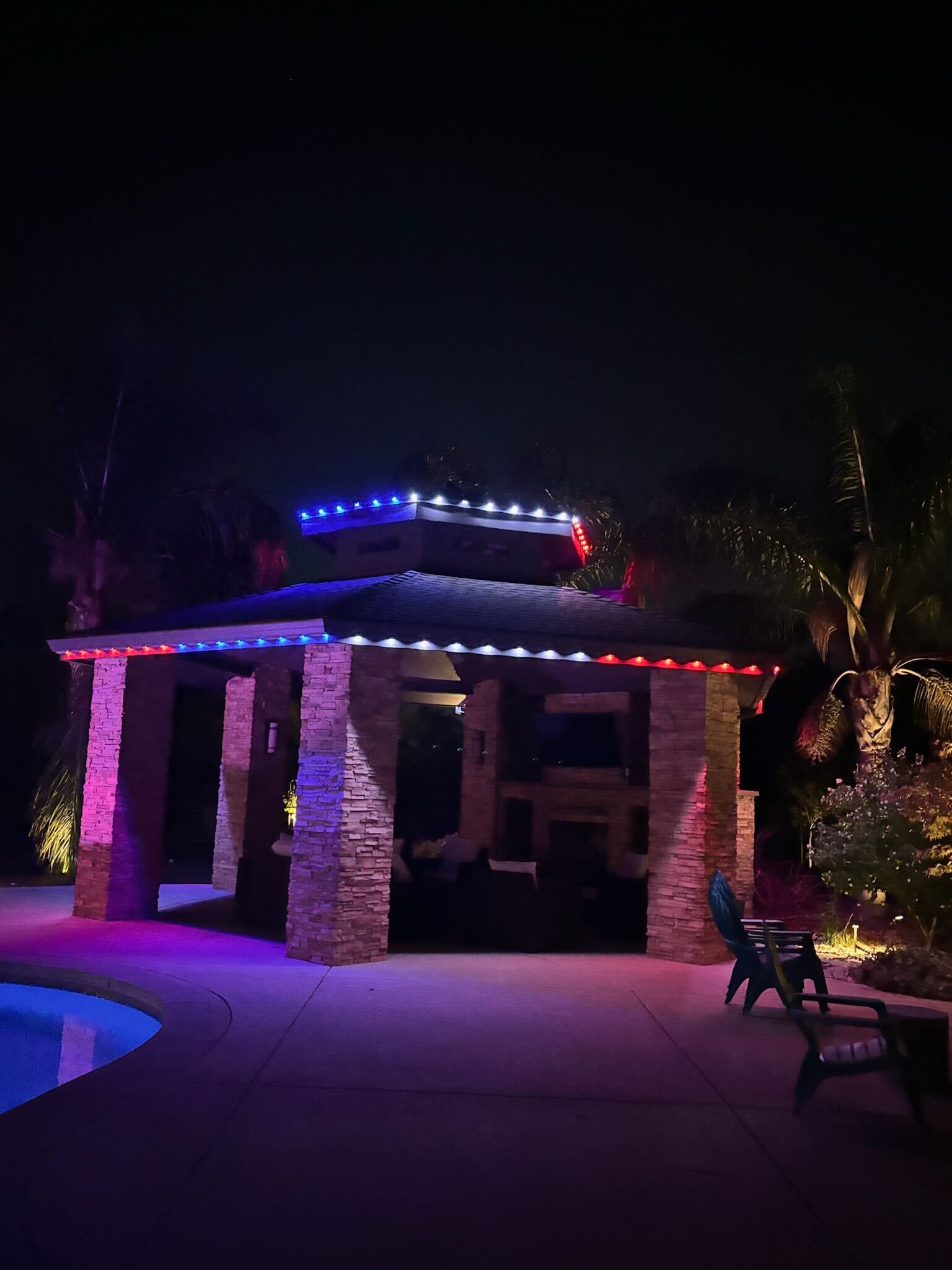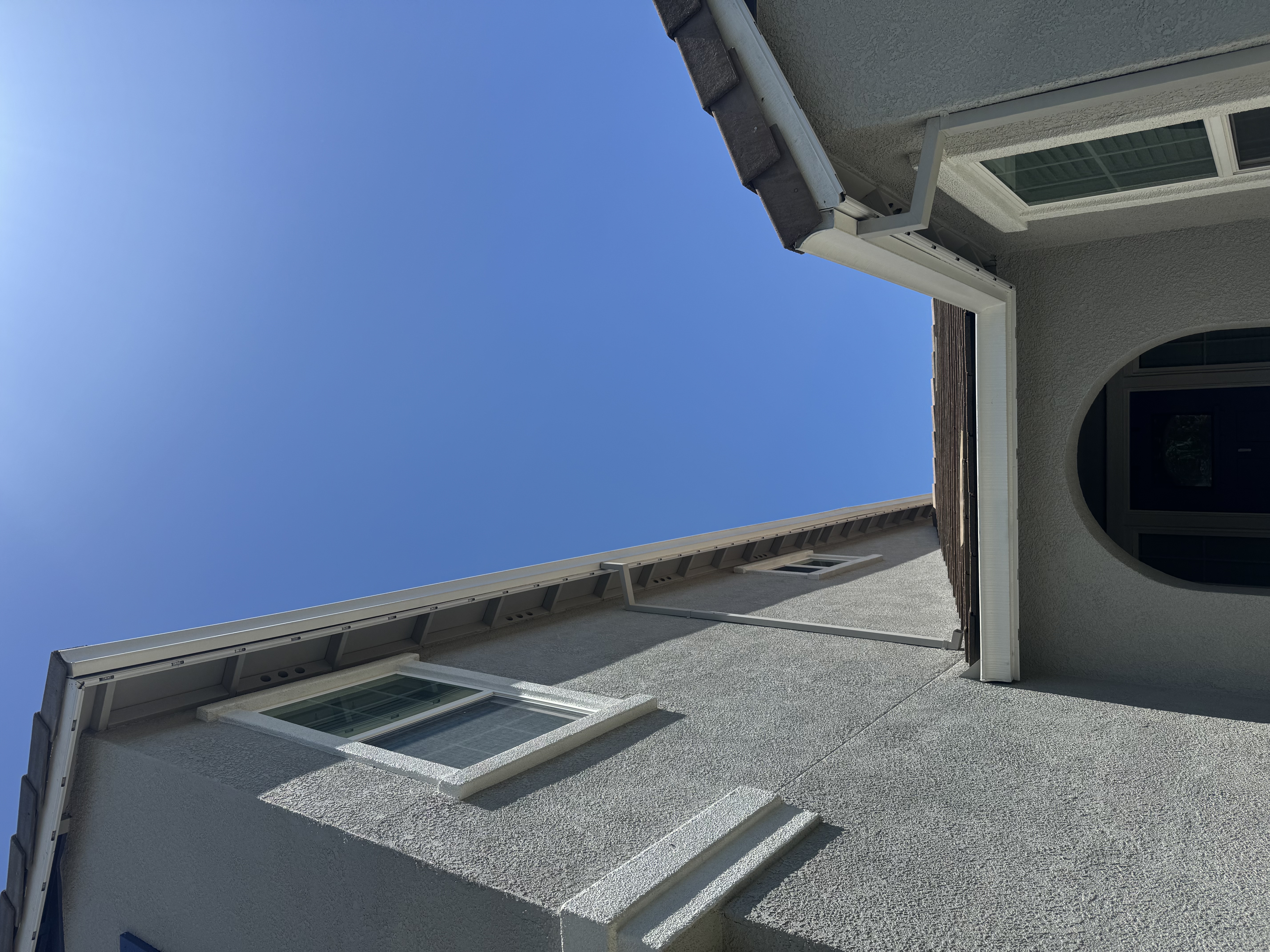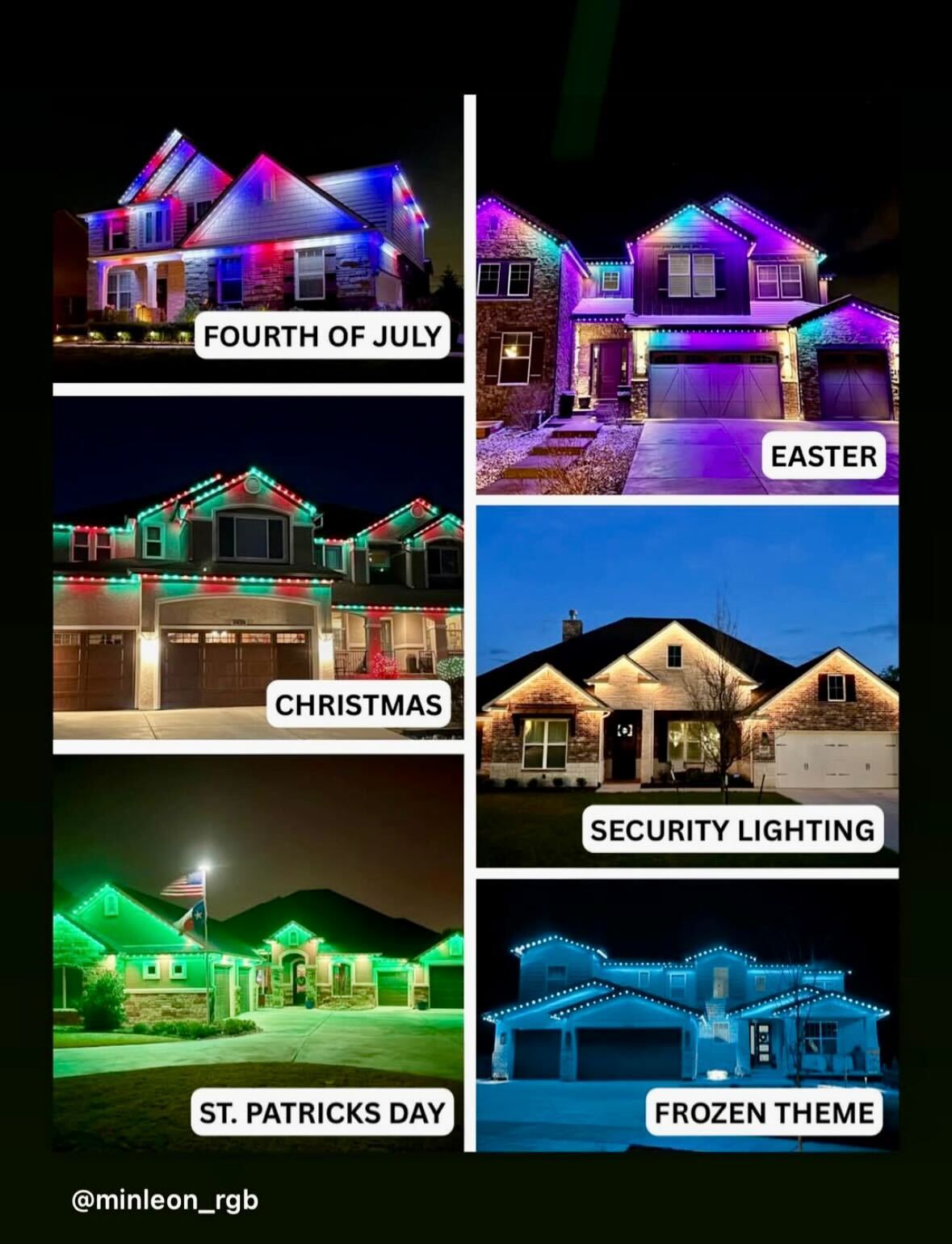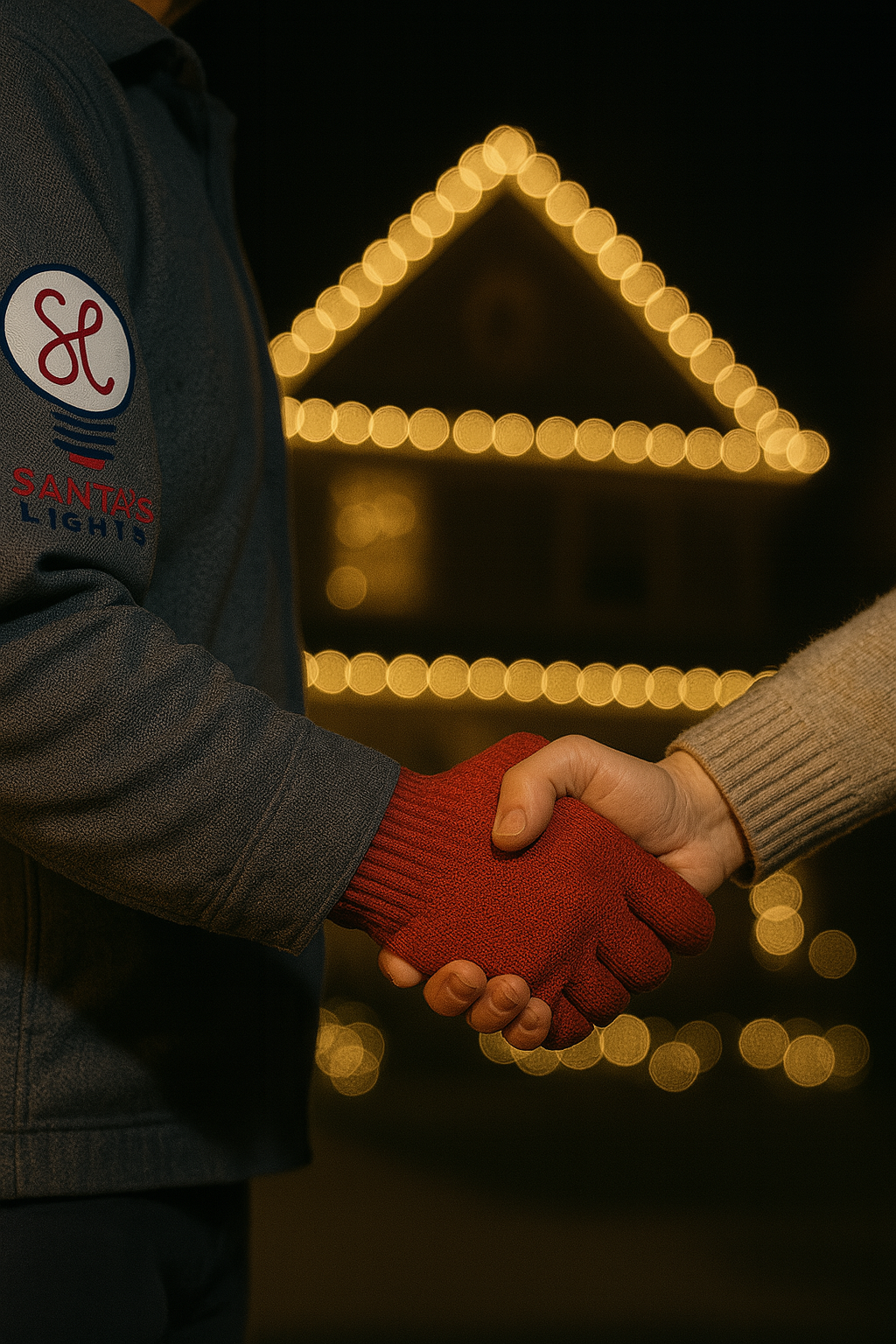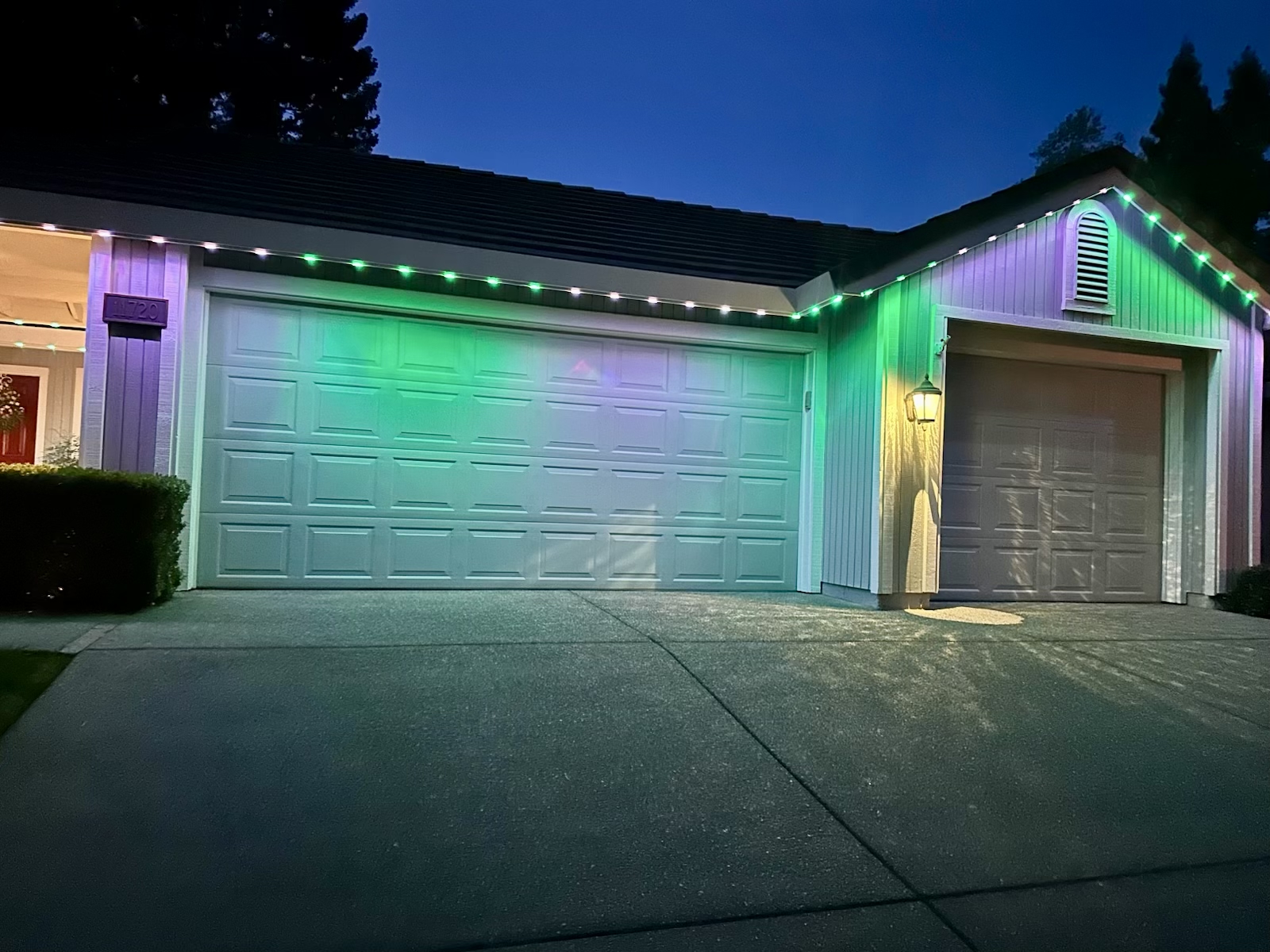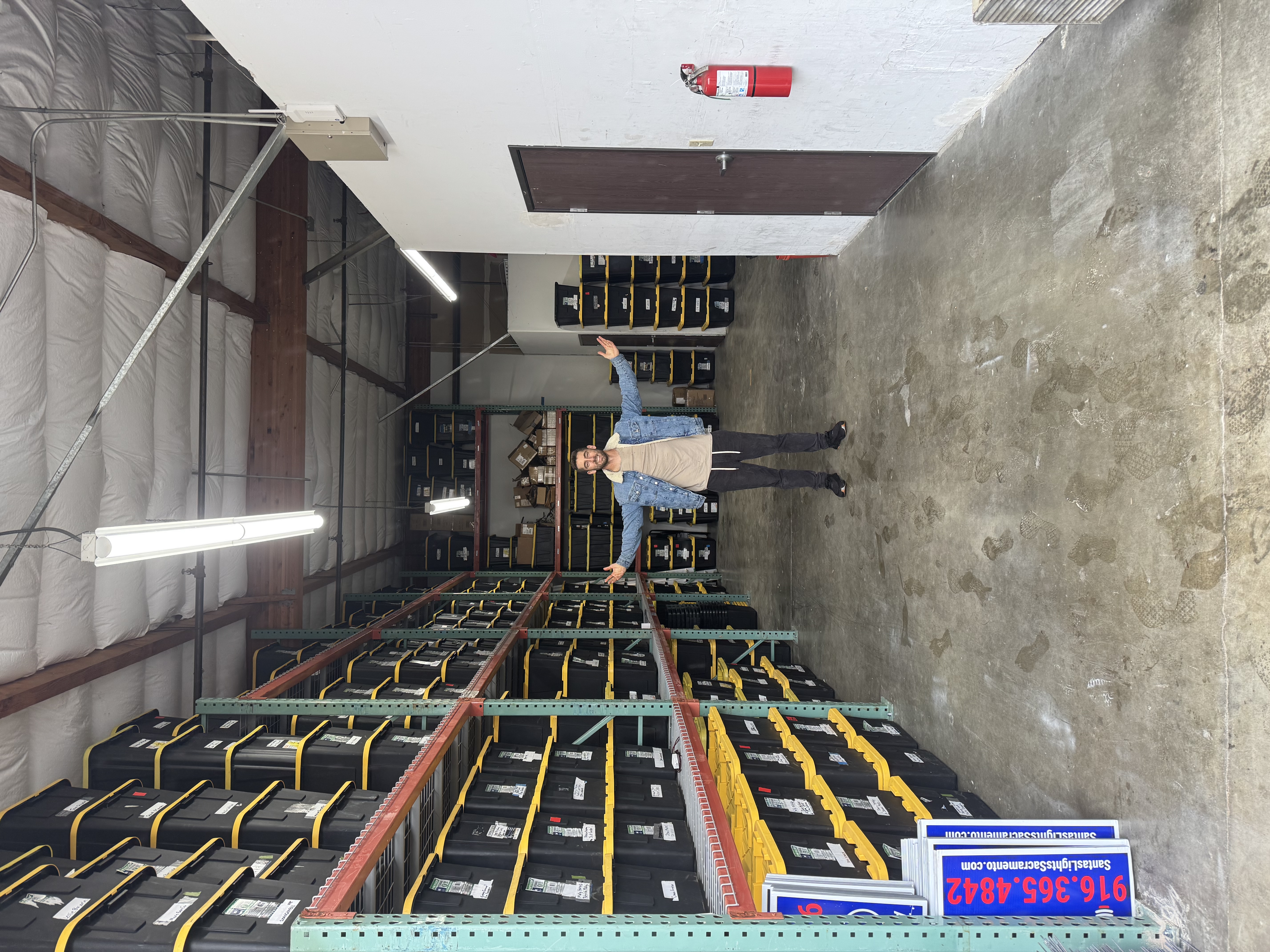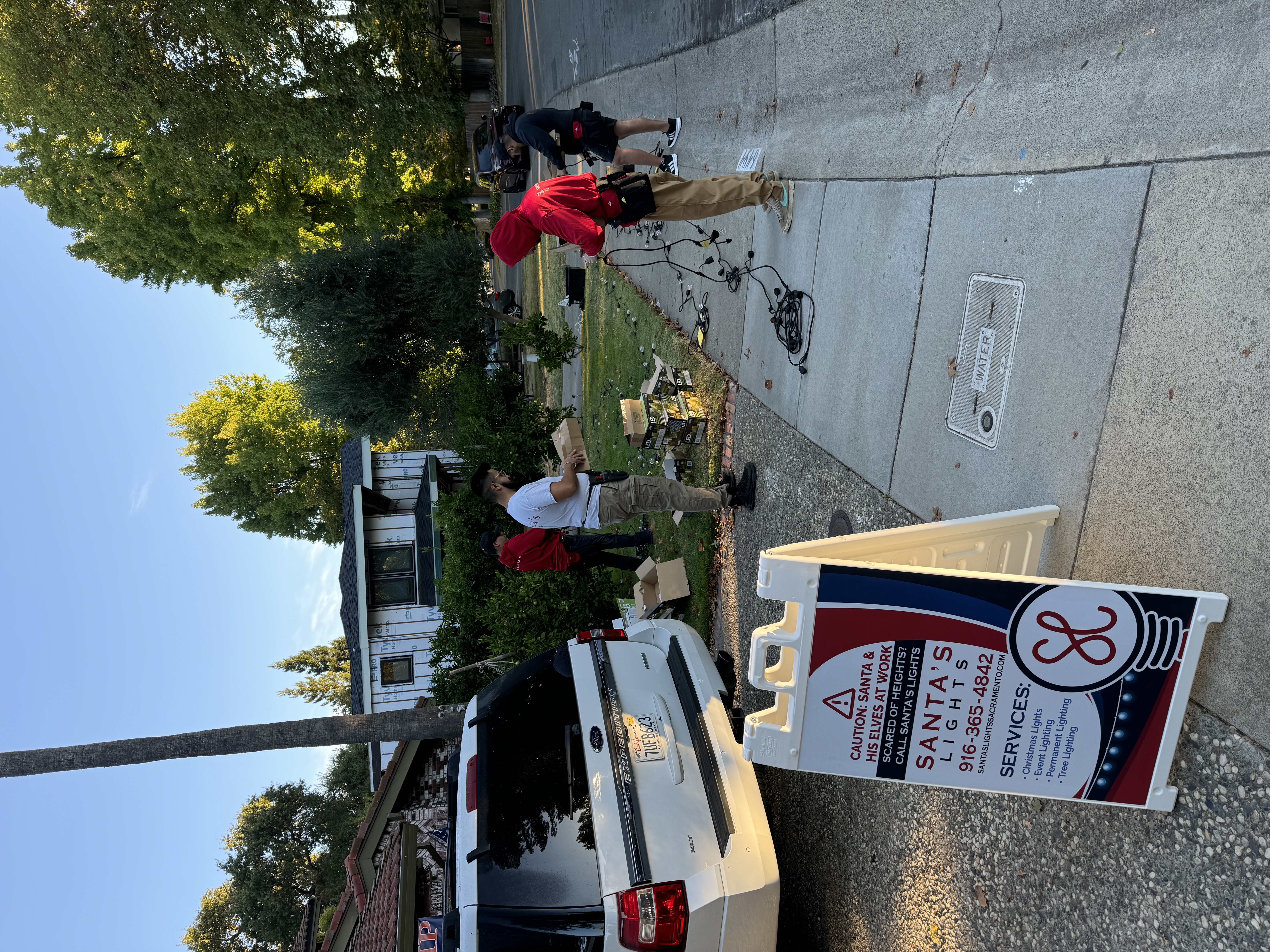
Permanent Lighting Cost Guide for Homeowners | By Santa's Lights
The Honest Truth From 11 Years in the Game
After 11 years in the lighting business, I’ve heard the same question more times than I can count:
“How much does permanent lighting really cost?”
Everyone asks about it. No one wants a sales pitch.
So, let’s skip the shiny brochure talk and get straight into the numbers — what things actually cost, why quotes can range wildly, and what’s really worth your money (and what’s just going to flicker out next year).
Because the truth is, a permanent lighting system can run anywhere from $2,500 to over $12,000, and the difference isn’t random — it’s built into the materials, installation, and whether the people doing the job actually know what they’re doing.
For Christmas lighting installation in Fair Oaks, lighting in Sacramento, or help with your property elsewhere in the area, get in touch. For detailed information about permanent lighting costs, keep reading.
How Much Does Permanent Lighting on Your House Cost? The Short Answer
Here’s what most Sacramento homeowners pay:
| Type of Installation | Typical Home Size | Average Cost Range |
|---|---|---|
| Front Roofline Only | Single-story (60–80 ft) | $2,500 – $4,000 |
| Full Home Coverage | 100–150 ft, standard home | $4,500 – $8,500 |
| Large / Multi-Story Home | 200+ ft, multiple zones | $8,500 – $12,000+ |
If you’re in Elk Grove, Roseville, Rocklin, Folsom, or the greater Sacramento area, most full-home installs land around $5,500–$8,500.
That might sound like a wide range — and it is. But once you understand why, those quotes that seem “too good to be true” suddenly make perfect sense.
What Actually Drives the Cost
Roofline & Footage
It starts simple: the more roof you’ve got, the more lights, clips, and hours go into it. Straight rooflines are easy. Peaks, dormers, and steep pitches? That’s skilled work — and yes, it costs more than your nephew with a ladder and a YouTube video.
Rule of thumb: every additional 10 feet adds roughly $150–$250 depending on complexity. Think of it like house painting — painting a single wall is quick, but add angles, trim, and height, and you’ve suddenly doubled the time (and risk of falling off a roof).
LED & Material Quality
Let’s talk about the elephant in the attic: not all LEDs are created equal. Cheap systems often come from overseas factories using off-brand chips that fade faster than last year’s TikTok trend. The color shifts, brightness drops, and after a few Sacramento summers and rainstorms, half your roofline looks like it’s celebrating Halloween instead of Christmas.
At Santa’s Lights Sacramento, we use Minleon commercial-grade LEDs — built for brightness, color consistency, and durability. They handle both our 100-degree summers and our winter rain. If you’ve ever seen a faded, uneven roofline and thought, “Why does that house look like a sad carnival?” — that’s what cheap LEDs do.
Control System & Features
Here’s where the tech nerds (and party hosts) get excited.
A $2,000 system and a $9,000 system might look the same when turned off. Flip the switch, though, and the difference is night and day.
High-end systems give you:
- Full app-based color control for every holiday and event
- Zoning – control different parts of your house independently
- Smart home integration – Alexa, Google, and automation routines
- Animations & scene scheduling – because your house should dance a little too
Cheaper systems? You’re lucky if they come with a remote that doesn’t look like it came out of a kid’s toy drone kit.
Labor & Installation Standards
This is where “a guy and a ladder” versus “a professional installer” really shows.
A professional install:
- Hides every wire and connector
- Seals every junction from rain
- Routes power safely and discreetly
- Uses aluminum tracks that match your trim color
A cheap install:
- Zip ties
- Dangling wires
- Exposed connectors
- And usually a “warranty” that disappears faster than the installer’s phone number after Christmas
Warranty & Local Service
This one’s simple but critical. Ask yourself: When something goes wrong, who’s showing up?
If the answer is a 1-800 number, you’re in trouble.
A local company like ours means you’re covered — fast repairs, real humans, and accountability that doesn’t vanish after your final payment.
Why Some Companies Are Cheaper
Let’s be blunt — if a quote is way lower than everyone else’s, there’s a reason. Usually three of them.
| Shortcut | What It Means | The Risk |
|---|---|---|
| Cheaper Components | Off-brand LEDs, flimsy wiring, no weatherproofing | Fading, flickering, total system failure in 2–3 years |
| Corner-Cut Labor | Exposed wires, quick installs, no sealing | Moisture damage, short circuits, ugly finish |
| No Warranty / Fly-by-Night Installer | No backup, no service, gone next season | You’re on your own when something fails |
It’s the same story every time: “We went with the cheaper guy… and now half the lights don’t work.”
You save a few hundred upfront, then spend a few thousand fixing it later.
Why Premium Lighting Systems Cost More (and Are Actually Worth It)
A high-end permanent lighting system isn’t just about looking good — it’s about never dragging out the ladder again, never untangling a ball of wires, and having your home look incredible year-round.
| Feature | Cheap Systems | Premium Systems (Santa’s Lights) |
|---|---|---|
| LED Type | Basic, offshore RGB | Minleon commercial-grade, color-accurate LEDs |
| Controller | Limited presets, laggy remote | Full app, custom zones, animations, smart home sync |
| Installation | Exposed wires, visible clips | Hidden tracks, sealed connectors, color-matched trim |
| Durability | 2–3 years before fading | 10+ years with minimal maintenance |
| Warranty & Service | 6–12 months (if you’re lucky) | Full warranty, local technician support |
| Overall Look | “Nice from a distance” | “Holy crap, your house looks amazing!” |
With a reputable local team, you’re not paying for just lights — you’re buying craftsmanship, technology, and peace of mind.
Sacramento Permanent Lighting Pricing Examples
| Type of Project | Description | Typical Range |
|---|---|---|
| Front Roofline Only (60–80 ft) | Single-story, front only, standard app control | $2,500 – $3,500 |
| Full Home Coverage (100–150 ft) | Multiple rooflines, custom design, premium LEDs | $4,500 – $7,500 |
| Luxury / Multi-Zone Home (200+ ft) | Multi-story, zoning, full RGB app control | $8,500 – $12,000+ |
In our Sacramento installs, most homeowners invest between $5,500 and $8,500 for a full premium setup designed to last a decade or more.
Permanent Lighting in Sacramento: Local Factors That Affect Cost
Sacramento’s weather plays a big role in how long your system lasts.
- Hot Summers: Low-grade LEDs fade fast under UV exposure.
- Rainy Winters: Poor sealing means moisture gets in, and corrosion follows.
- Pollen & Dust: Cheaper tracks and open wiring collect debris and clog up.
That’s why our systems are built for year-round performance — fully sealed connectors, weather-rated cabling, and commercial-grade housings that handle everything from Folsom heat to Roseville thunderstorms.
Hidden Benefits of Our Lights That Nobody Talks About
- Energy Efficiency: LEDs use about 80% less power than traditional lights.
- Curb Appeal: Your home becomes “that house” — the one everyone drives by to admire during the holidays.
- Safety: No ladders, no trips to the ER, no last-minute light failures.
- Flexibility: Fourth of July red-white-blue? Halloween orange? Game-day gold and black? It’s all just a tap on your phone.
- Longevity: Installed right, permanent lights can last 10–15 years with minor maintenance.
Common Myths
Myth 1: “Permanent lighting is only for Christmas.”
Nope. You’ll use it for birthdays, game nights, summer BBQs, weddings, and random Tuesday nights when you just want your house to glow pink because why not?
Myth 2: “It’ll ruin my roof.”
A professional installer uses color-matched aluminum tracks that attach cleanly and safely — no holes, no leaks, no regrets.
Myth 3: “I can just DIY it.”
Sure, you can also “DIY” your car’s brakes. Doesn’t mean you should.
FAQs: What Sacramento Homeowners Ask Most
How long does a permanent lighting install take?
Most homes are done in one day. Larger or complex roofs may take two.
Do permanent lights raise my energy bill?
Barely. Even a full 200-foot system uses less power than your fridge light.
What happens if one light goes out?
Each LED is individually addressable — so one bad bulb won’t take out the rest.
Can they handle Sacramento’s heat and rain?
Absolutely. We install weather-sealed Minleon LEDs rated for full outdoor exposure.
How long do they last?
10+ years when maintained properly. We’ve got customers from a decade ago whose homes still shine bright.
What’s the maintenance like?
Minimal. Just keep your gutters clear and rinse off heavy debris if needed.
Do you offer a warranty?
Yes — full warranty on parts and labor, backed by local service. No overseas call centers.
The Smartest Investment You’ll Make in Your Home
Permanent lighting isn’t just about holidays. It’s about peace of mind, safety, and having your home look sharp every single day of the year.
You never climb another ladder. You never untangle another wire. You never wonder which section will go dark next time it rains.
If you’re reading this in November or December, now’s the best time to act — installers fill up fast once the first neighbor lights up their roof.
Final Thoughts on Christmas and Permanent Lighting Cost
After 11 years installing Christmas lights in Rocklin, Roseville, and all of the surrounding areas, I can tell you — the best investment isn’t just in lights. It’s in doing it once and doing it right.
So get a few quotes. Ask questions. See who answers them straight. Then pick the company that stands behind their work.
Because when your home lights up every holiday, game night, and random Tuesday — year after year — you’ll know exactly why paying for quality was worth every penny.

